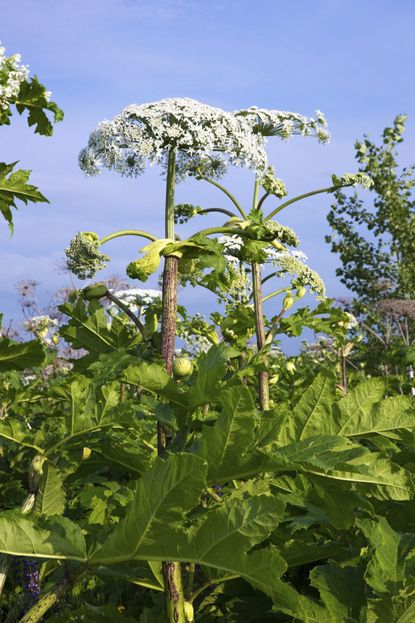Cow Parsnip Information – What Does Cow Parsnip Look Like


Cow parsnip is an elegant blooming perennial native to the Pacific and Atlantic coasts. It is common in forested areas as well as grasslands, shrub lands, meadows, alpine regions, and even riparian habitats. This vigorous plant is an important forage species for numerous animals. What does cow parsnip look like? Read on for more cow parsnip information and a guide to identifying the species.
What Does Cow Parsnip Look Like?
Cow parsnip (Heracleum lanatum) is easy to confuse with several other plants in the carrot family. Some of these plants can actually be dangerous, so identification is extremely important. What is cow parsnip? It is an herbaceous, flowering, wild plant that develops umbels of tiny white flowers in a cloud atop tall stems. The plants that are similar also develop the same umbels and have similar forms. Queen Anne's lace, water hemlock, poison hemlock, and giant hogweed all bear the same flower type and have similar feathery leaves. Cow parsnip is a flowering dicot that can grow up to 10 feet (3 m.) in height. It is characterized by large 1 to 1 ½ foot (31-46 cm.) across, serrated palmate leaves. The stems are erect, stout, and have small thorn-like protuberances. The flowers are a creamy white, lacy, flat-topped cluster that may grow up to a foot (31 cm.) in diameter. This smaller flower size is one key to ruling out the poisonous giant hogweed, which has 2 foot (61 cm.) wide blooms and can grow up to 20 feet (6 m.) tall. Cow parsnip growing conditions are similar to this plant, but its cousins, Queen Anne's lace and poison hemlock, prefer drier locations and water hemlock is a riparian plant.
Cow Parsnip Information
Cow parsnip's relatives are all poisonous to one degree or another. Can you eat cow parsnip? It is not toxic, but the juice can cause contact dermatitis in sensitive individuals. Washing the affected area and avoiding sunlight for a few days can reduce irritation. The plant is eaten by deer, elk, moose, and livestock. In fact, it is even planted as forage. Native Americans ate the inside of the stem and boiled the roots to extract the sugar. The plant is also known as Indian parsley or Indian rhubarb. By contrast, its relatives, poison hemlock and water hemlock, are deadly and giant hogweed is extremely toxic to skin, causing large, weeping, painful blisters. Queen Anne's lace’s sap is less toxic but can cause skin irritation.
Cow Parsnip Growing Conditions
Differentiating the five species can be done by the sizes of the plants and their flowers but also by the areas in which they grow. Cow parsnip may be found in USDA zones 3 to 9. It originated in Europe but naturalized in the United States and across Canada. It grows best in moist, shady locations but also thrives in open, drier areas. The plant prefers loam or sandy loam with good drainage. Cow parsnip may be found as an understory species but also in sub-arctic alpine zones. This lovely plant is important in many ecosystems and is an attractive wildflower to grow in a perennial garden.
Gardening tips, videos, info and more delivered right to your inbox!
Sign up for the Gardening Know How newsletter today and receive a free download of our most popular eBook "How to Grow Delicious Tomatoes."

Bonnie Grant is a professional landscaper with a Certification in Urban Gardening. She has been gardening and writing for 15 years. A former professional chef, she has a passion for edible landscaping.
-
 Urban Composting Guide: How To Compost In The Middle Of The City
Urban Composting Guide: How To Compost In The Middle Of The CityUrban composting does not have to be daunting. You can compost in the city, and maybe even try some urban worm composting!
By Mary Ellen Ellis
-
 Shrub Diseases And Pests To Watch Out For
Shrub Diseases And Pests To Watch Out ForShrub diseases and pests can be challenging. Learn how to recognize and eradicate them before they can present a danger to your plants.
By Susan Albert